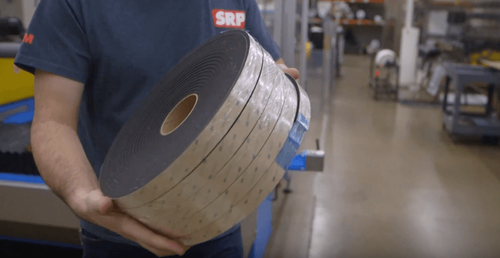
Gaskets vs Seals: What’s The Difference and Why Does It Matter?
Are gaskets and seals the same thing? The answer can be confusing. They both make a seal to prevent leaks and guard against dust and particles. Both are made from flexible material, such as rubber, polyurethane or silicone. When you look at design and function, the distinctions start to emerge. In short, gaskets connect two separate pieces and create a seal through compression of the elastomeric material. A seal is usually fitted into the end of a shaft or a line to protect against leaks.
What’s a gasket?
While a gasket provides sealing function, these are some of the properties that distinguish it from a seal.
- Gaskets allow the connection between two components without the need to machine a metal part.
- Gaskets conform to the joint or flange, and maintain compression to block leaks and unwanted particles.
- Often used in static applications.
- Can be die cut from elastomeric materials into custom shapes to fit the parts.
What’s a gasket made of?
A gasket is part of a sealing system, and it has three main components:
- Flanges or joint, which is the flat surface the flexible material conforms to.
- Gasket, which is the die cut elastomeric material.
- Fasteners, which hold clamping force to maintain compression.
All three work together to create gasket compression to establish a seal. The compression is created by the clamping force of the gasket, and that pressure causes the elastomeric material to compress tightly.
How do you choose a material for a gasket?
Compression set resistance is one of the top considerations when choosing a gasket material, because the material’s ability to spring back to its original shape correlates with its sealing ability. As compression set creeps in over weeks, months and years, the gasket can gradually lose its ability to block leaks and contaminants.
Finding the right material requires factoring in the material’s hardness and the amount of pressure so you can achieve the protection and performance you expect. (A custom converter can help you identify the best material for your application.)
But in addition to compression set resistance, exposure to other elements, such as dust, excess heat, sunlight and solvents, can impact the material’s performance over time.
Excessive heat and ultraviolet rays can harden certain soft materials, so it loses conformity with the flange, which leads to leaks.
What’s a rubber seal?
Unlike gaskets, seals are most often used to prevent leaks in active applications and are fitted between moving or rotating parts, such as pumps, shafts and other engine components. If you think of the classic flat, round O-ring, that’s a seal.
Seals are often used to prevent leaks and are fitted to the end of a shaft or for sealing hydraulic lines. Seals are also used in bearings.
Rubber seals include:
- O-rings
- Valve stem seals
- Rotary seals
- Mechanical seals
As you’re designing your custom gasket, there can be confusion around the terms gaskets and seals. When it’s time to finalize your materials – the foam rubber and the pressure-sensitive adhesive backing – SRP has more than 70 years experience in custom gasketing. Call us today to get your project going.
